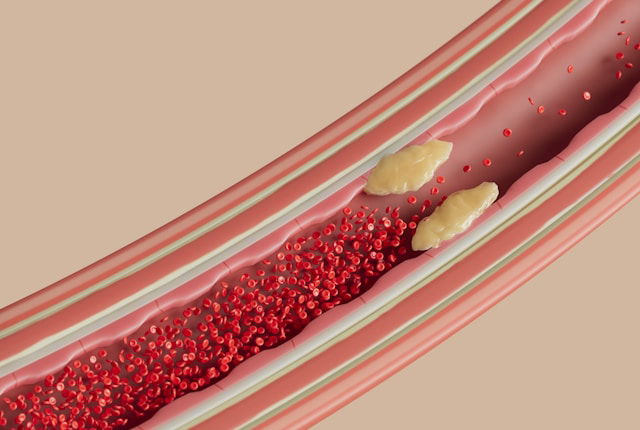
Blood clots can be very dangerous and even deadly, and they form in two different parts of the body: arteries and veins. Scientists have long known that the causes and risks differ depending on where the clot is.
A new study from Lund University in Sweden has now found three genetic changes that can raise the risk of getting a blood clot in the leg by as much as 180 percent.
In Sweden, about half of all venous blood clots are linked to genes. Arterial clots usually happen when fatty deposits in blood vessels break open and the body reacts as if there’s been an injury.
This causes platelets to stick together and form a clot. If this happens in the heart or brain, it can cause a heart attack or stroke.
Venous clots, on the other hand, often form when blood pools in the legs, such as when someone sits still for too long. This slow-moving blood can trigger the body’s clotting system and block blood flow. If the clot moves to the lungs, it can cause a life-threatening condition called pulmonary embolism.
Dr. Bengt Zöller, a doctor at Skåne University Hospital and a professor at Lund University, says venous blood clots are a major cause of death but often don’t get as much attention as arterial ones. Every year, more than 10,000 people in Sweden suffer from venous blood clots, and the number is rising.
Age is a big factor—10% of people over 80 will have a clot at some point. The risk also goes up for people who are overweight or tall. This is because muscles help push blood through the veins in the legs, and tall people have longer veins where gravity makes blood flow slower.
Unlike arteries, veins don’t have high pressure, so they don’t suffer from atherosclerosis (hardening of the arteries). This means that high blood pressure and cholesterol aren’t big risk factors for venous clots.
Smoking is only a small to moderate risk. But being overweight is a major issue, especially because it’s often linked to being less active. Obesity can also affect clotting factors in the blood, increasing risk.
There’s not as much research on diet, but some studies suggest that eating lots of processed foods may slightly increase the risk of clots, while plant-based diets may lower the risk. One study also found that commercial fishermen had a lower risk, possibly due to higher levels of omega-3 in their diets.
There are also certain times when the risk of clots is especially high. These include long airplane flights, long periods of bed rest, surgery, or inflammation.
Pregnancy is another high-risk time, because blood naturally clots more easily and some protective proteins are reduced. In these situations, blood thinners may help reduce the risk if there are other risk factors involved.
Some people also carry gene mutations that affect how their blood clots. One well-known mutation is called Factor V Leiden, which makes the body more resistant to a natural blood thinner called activated protein C (APC).
About 10% of Swedes carry this gene, making it the most common clotting mutation among people of Indo-European background. It may have helped people in the past bleed less, but today it’s a risk factor, especially in inactive lifestyles.
The Lund University research team, including Zöller, recently studied 30,000 people from Malmö as part of a large health study. They looked at 27 genes linked to blood clotting and found three new ones—ABO, F8, and VWF—that each raise the risk by 10 to 30 percent.
When combined, these genes can raise the risk of venous clots by 180 percent. Unlike Factor V Leiden, these gene variants are found in people all over the world.
The next step for the researchers is to see how these gene risks affect how long people should take blood thinners after a clot. Zöller believes that using genetic risk information to tailor treatments will become more important in the future.
To reduce your risk of blood clots, it helps to stay active, especially during long trips. Compression stockings can support blood flow. Blood thinners can be used in high-risk situations like after surgery.
People with a strong family history of clots should be cautious with hormone treatments. Eating healthy, staying at a healthy weight, quitting smoking, and exercising all help. Getting vaccinated is also important, as infections can increase clotting risk.
A blood clot is a clump of thickened blood that blocks a blood vessel. It can form in the arteries, which carry oxygen-rich blood from the heart, or in the veins, which return blood to the heart and lungs. Understanding the causes and risks of blood clots—and taking steps to prevent them—can save lives.
If you care about heart health, please read studies that vitamin K helps cut heart disease risk by a third, and a year of exercise reversed worrisome heart failure.
For more health information, please see recent studies about supplements that could help prevent heart disease, stroke, and results showing this food ingredient may strongly increase heart disease death risk.
The study is published in Research and Practice in Thrombosis and Haemostasis.
Copyright © 2025 Knowridge Science Report. All rights reserved.



